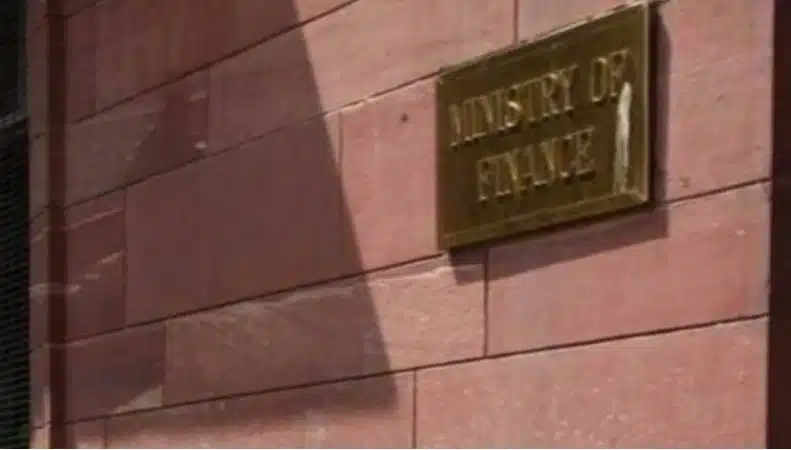What’s in today’s article?
- Why in news?
- What is Stamp duty?
- Indian Stamp Bill, 2023
- What is Indian Stamp Act, 1899?
Why in news?
- The Centre has proposed repealing the Indian Stamp Act, 1899 and bringing in a new law for the stamp duty regime in the country.
- In this context, recently, the Ministry of Finance invited suggestions on the draft ‘Indian Stamp Bill, 2023’ from the public.
Stamp duty
- About
- A stamp duty is essentially a govt tax, which is levied to register documents, like an agreement or transaction paper between two or more parties, with the registrar.
- Amount
- Usually, the amount specified is fixed based on the document’s nature or is charged at a certain percentage of the agreement value stated in the document.
- Levied on
- Stamp duties can be levied on bills of exchange, cheques, promissory notes, bills of lading, letters of credit, policies of insurance, transfer of shares, debentures, proxies and receipts.
- Valid evidence in a court of law
- Stamp duties are accepted as valid evidence in a court of law.
- Appropriation of stamp duties
- Stamp duties are levied by the Centre but appropriated by the concerned states within their territories under Article 268 of the Constitution.
Indian Stamp Bill, 2023
- About
- The Indian Stamp Bill, 2023 is a draft bill prepared by the Department of Revenue, Ministry of Finance.
- The bill aims to replace the Indian Stamp Act, 1899 and align it with a modern stamp duty regime.
- Need for new bill
- Several provisions of the Indian Stamp Act, 1899 have now become redundant or inoperative.
- For instance, there was a lack of provisions for digital e-stamping in the 1899 Act.
- Also, in earlier act, there was lack of uniform legislation for all Indian states regarding stamp duties.
- The 1899 Act extended to 30 states and Union Territories combined while six states followed their own stamp acts and rules.
- Several provisions of the Indian Stamp Act, 1899 have now become redundant or inoperative.
- Key features
- In order to equip India for a seamless digital era, the bill includes provisions for digital e-stamping.
- It defines an electronic stamp or e-stamp as an electronically generated impression denoting the payment of stamp duty by electronic means or otherwise.
- There are also provisions for digital signatures.
- Digital or electronic signature refers to the authentication of any electronic record by a subscriber through an electronic method or procedure.
- The draft Bill also proposes to raise penalties.
- It seeks to increase the maximum penalty amount from Rs 5,000 to Rs 25,000 for contravening any provisions of the law and impose Rs 1,000 per day for repeated offences.
Indian Stamp Act, 1899
- The Indian Stamp Act, 1899 is a fiscal or money-related statute that lays down the law relating to tax levied in the form of stamps on instruments recording transactions.
- Section 2 of the Act says that an instrument refers to any document that creates, transfers, limits, extends, ends, or records a right or liability.
- According to this Act, a “stamp” means any mark, seal, or endorsement made by a person authorized by the State Government.
- This definition also covers adhesive or impressed stamps used to charge duty under this Act.
- Section 3 of this Act prescribes that certain instruments or documents shall be chargeable with the amount indicated in Schedule 1 of the Act.
- These include bills of exchange or promissory notes.
Q1) What is electronic stamp?
Electronic stamping, or e-stamping, is a digital method for paying stamp duty for legal documents and transactions.
Q2) What is the United Nations (UN)?
Article 268 of the Indian Constitution deals with duties levied by the Union but collected and appropriated by the states. These duties include: Stamp duties on bills of exchange, cheques, p notes, and transfer of shares; Excise duties on medicinal and toilet preparations containing alcohol and narcotics.
Source: Why Centre plans to replace the Indian Stamp Act, 1899 with a new law | Hindustan Times | Indian Express
Last updated on June, 2025
→ UPSC Notification 2025 was released on 22nd January 2025.
→ UPSC Prelims Result 2025 is out now for the CSE held on 25 May 2025.
→ UPSC Prelims Question Paper 2025 and Unofficial Prelims Answer Key 2025 are available now.
→ UPSC Calendar 2026 is released on 15th May, 2025.
→ The UPSC Vacancy 2025 were released 1129, out of which 979 were for UPSC CSE and remaining 150 are for UPSC IFoS.
→ UPSC Mains 2025 will be conducted on 22nd August 2025.
→ UPSC Prelims 2026 will be conducted on 24th May, 2026 & UPSC Mains 2026 will be conducted on 21st August 2026.
→ The UPSC Selection Process is of 3 stages-Prelims, Mains and Interview.
→ UPSC Result 2024 is released with latest UPSC Marksheet 2024. Check Now!
→ UPSC Toppers List 2024 is released now. Shakti Dubey is UPSC AIR 1 2024 Topper.
→ Also check Best IAS Coaching in Delhi





















